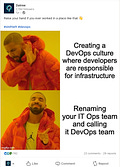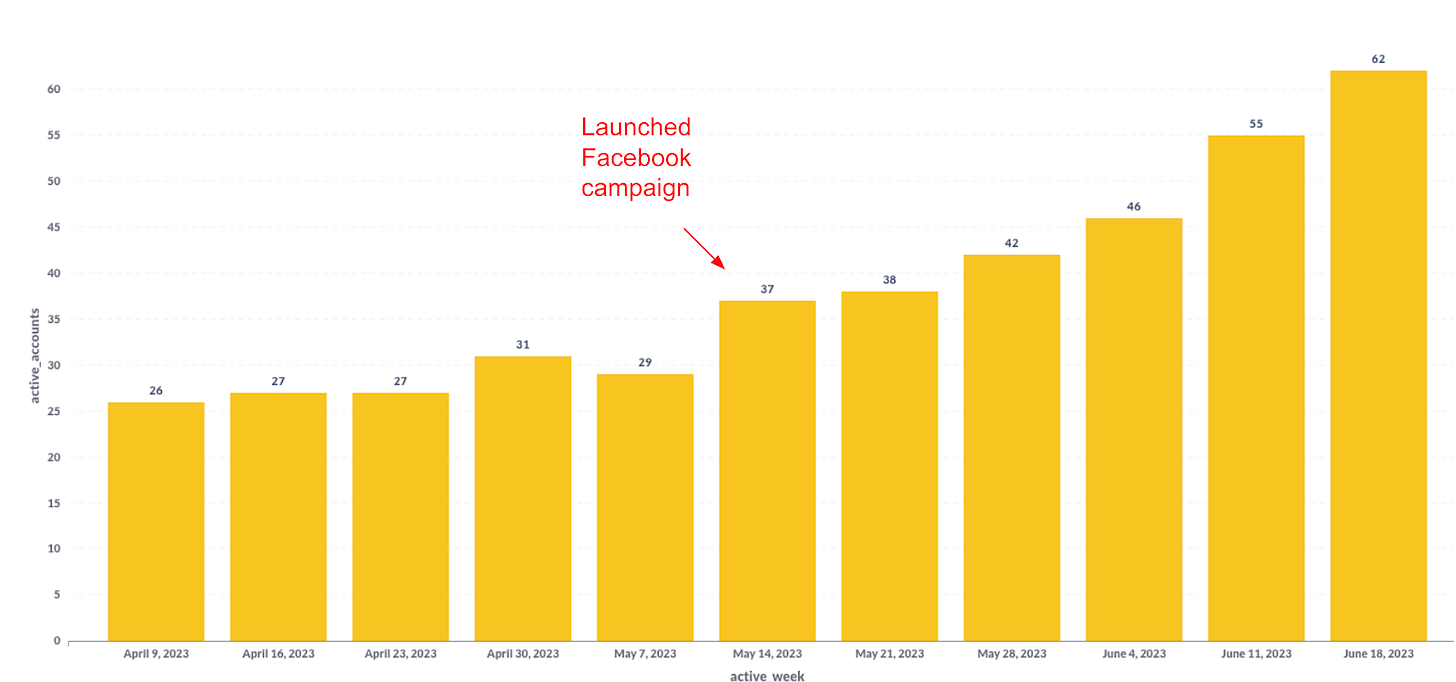Why I failed to make Linkedin work for product-led growth
And how I succeeded on Facebook with metadata.io
TL;DR
Twice, I attempted to use LinkedIn for product-led growth; however, both attempts failed due to LinkedIn's high costs.
I successfully generated substantial engagement from DevOps and SREs, but engagement doesn't pay the bills.
As a solution, I used metadata.io to create LinkedIn-level audiences on Facebook. This strategy effectively doubled Datree's Weekly Active Accounts.
Linkedin is too damn expensive
My first attempt at product-led growth on LinkedIn was during my tenure at monday.com. At that time, monday.com had a unique approach to advertising that hinged on two main aspects:
High spend: At monday.com, they had little interest in small channels. Unless a channel could scale up to spend hundreds of thousands of dollars per month, and generate hundreds of paying customers, it wasn’t considered worthwhile.
Strict KPIs: At monday.com, a user acquisition manager wasn't constrained by a budget. You could spend as much as desired, provided you met some strict KPIs, with customer acquisition cost (CAC) being the most critical. If your channel hit the CAC target, you could—and were expected to— scale it extensively.
(Note: That was their strategy several years ago. I wouldn’t recommend it nowadays for a variety of reasons, and I presume it has significantly changed since then).
Unfortunately, this approach didn't suit LinkedIn due to its high cost. Achieving a CAC of $1000, with a typical conversion rate from free trial to paid of 10%, necessitates generating a signup for under $100. This is unfeasible when LinkedIn’ cost per click (CPC) is upwards of $10.
LinkedIn is more suited to top-down companies with large ACVs. It only makes economic sense to spend $300 or more per lead if the lead is a c-suite executive with the authority to spend $30k on a product. For a PLG startup needing to keep CAC low, LinkedIn isn't the best option.
Engagement is not the solution
Still, I found myself giving LinkedIn another shot while working at Datree. Why? Because LinkedIn offers unique advantages:
It is one of the few places where you can reliably reach your target audience. For instance, while I could advertise in the DevOps subreddit on Reddit, only LinkedIn would allow me to focus on US-based DevOps from Enterprises.
As a professional network, LinkedIn users are generally more receptive to being sold to. This contrasts with channels like Reddit where advertising often invites negative comments.
Furthermore, after about 18 months of implementing the YouTube strategy I previously discussed, it began to lose its effectiveness. While introducing new types of assets bought us another half-year of high performance, things inevitably slowed down.
I needed a new way to reach my audience, and Linkedin looked like a promising option. I knew the high CPCs are going to be a problem, but I believed I could overcome them by using creatives that emphasize entertainment and education over product awareness.
And so, I started releasing educational videos, thought-leadership posts, and memes, and boosting them with paid ads:
Sadly, it didn’t work.
With early-stage startups, my attribution strategy is straightforward: correlation equals causation. If you launch a campaign and see a significant improvement in your key KPIs within a few weeks, it suggests the campaign is successful.
In that case, we didn’t see such a boost. While I generated a lot of positive engagement, those ads didn’t significantly impact our bottom line, and after a few unsuccessful optimization attempts, I had to accept that this strategy had failed.
My theory? While focusing on engagement helped lower my CPCs significantly, it compromised product education. People were interacting with my posts, but they did not understands what Datree actually sold.
Metadata.io to the rescue
Ultimately, I couldn’t escape the lesson I had learned at monday.com: LinkedIn is too damn expensive for product-led growth. You can reduce prices with engaging content, but that often means sacrificing performance. There's no such thing as a free lunch.
So I turned to Facebook.
“But how can you target developers on Facebook?” you may wonder.
Targeting developers on Facebook is a challenging task. The platform knows if you like Chinese food and whether you're looking for new sneakers, but it doesn’t know if you work as a DevOps or a frontend developer.
This is where Metadata.io steps in. It's a tool that allows you to build Facebook audiences based on B2B attributes. It’s like using LinkedIn’s targeting on Facebook, or advertising on LinkedIn while paying Facebook’s CPCs.
As for creative, I used a video made by That DevOps Guy as a trailer for one of his videos on Datree, with the call to action being to watch the full video:
And so, at last, it worked. I created some DevOps and SRE audiences, launched the Facebook campaign, and within a week, we saw a 30% increase in Weekly Active Accounts. Two month later, that number had more than doubled:






Based on what I've noticed, metadata seems to come with a hefty price tag of minimum 36,000 USD per year. That's an additional expense of 3,000 USD every month. Do you think it's still worthwhile to incorporate metadata?